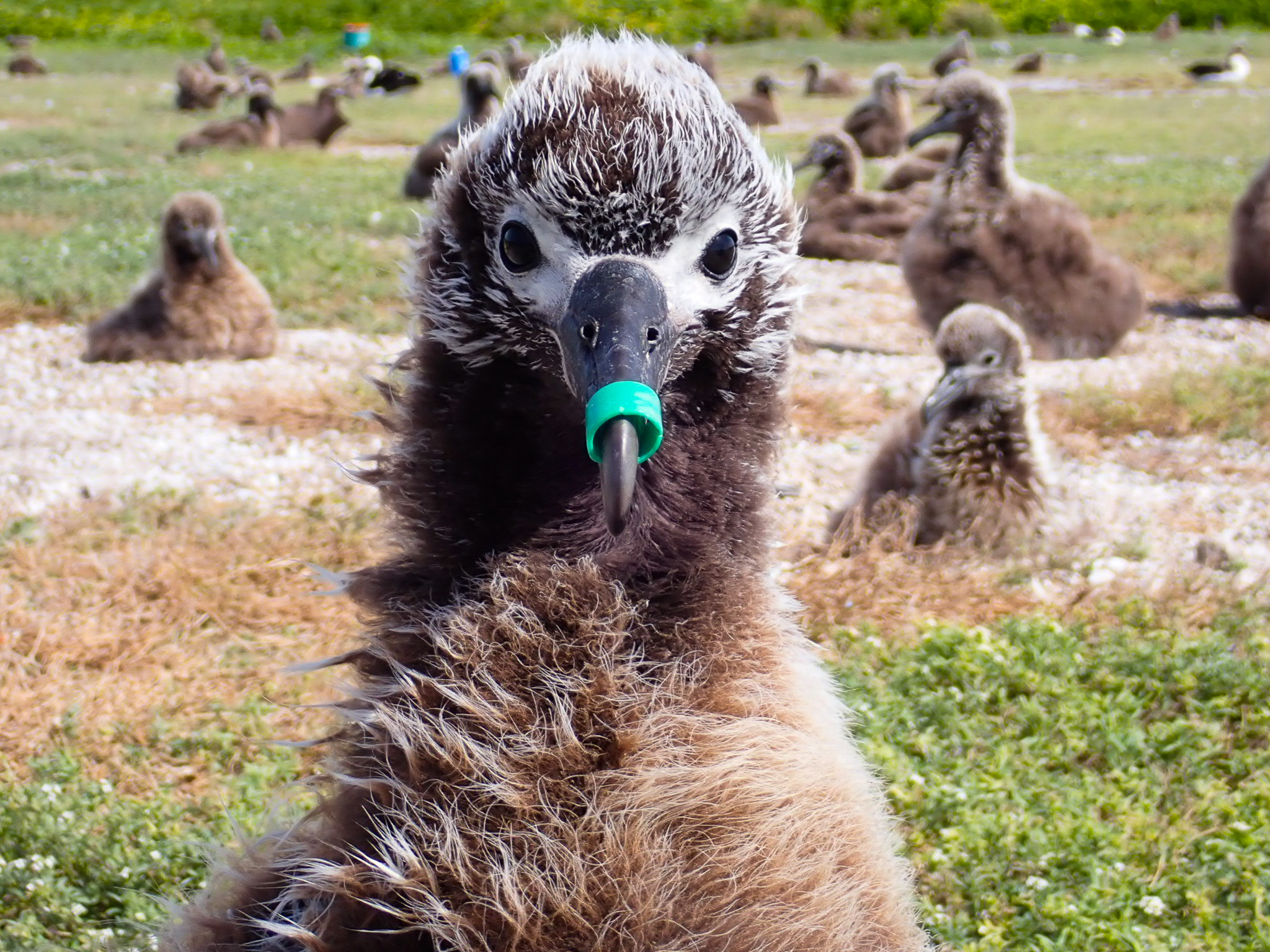
The Laysan Albatross chick with an oyster band around its upper mandible
Isabelle Beaudoin, a seabird biologist currently on Kure Atoll (Hōlanikū ) in the Northwestern Hawaiian Islands, writes a weekly blog on her observations and thoughts for the Facebook page of the Kure Atoll Conservancy. Her latest article follows on from a recent report in ACAP Latest News describing how she saved a Laysan Albatross or mōlī Phoebastria imuutabilis chick by removing an ingested balloon. Now she reports on another Laysan Albatross chick that had manged to get its beak entangled with an oyster band or ring.
Isabelle writes:
“Another bird had their lucky break this week. When Tlell [colleague on Kure] was doing a duck check … she came upon a mōlī chick with a bright green oyster ring wrapped around its upper bill mandible. These birds are attracted to bright-coloured objects and frequently pick up bright pieces of plastic on the ground to mouth them, sort of like a puppy does to investigate their world. They often, for example, come up to my sandals and nibble the brightly coloured flagging tape I have on them to distinguish them as mine, and they will come up to nibble at bright yellow buckets that I put down for laundry. These oyster rings are all over the ground on Hōlanikū, because albatross adults mistake them for food out at sea and bring them back to be fed to chicks. The chicks then eventually either cough them up as a bolus, or they die, and the oyster ring stays on the ground for more chicks to pick up. This chick had gotten the ring wedged around its bill, and Tlell was able to get it off the bird.”
In 2023 “Plastic Pollution” was ACAP‘s theme for World Albatross Day on 19 June. Bothe entangling with and ingestion of plastic items continue to be a problem for the world’s albatrosses.
John Cooper, Emeritus Information Officer, Agreement on the Conservation of Albatrosses and Petrels. 16 April 2025

 Español
Español  English
English  Français
Français